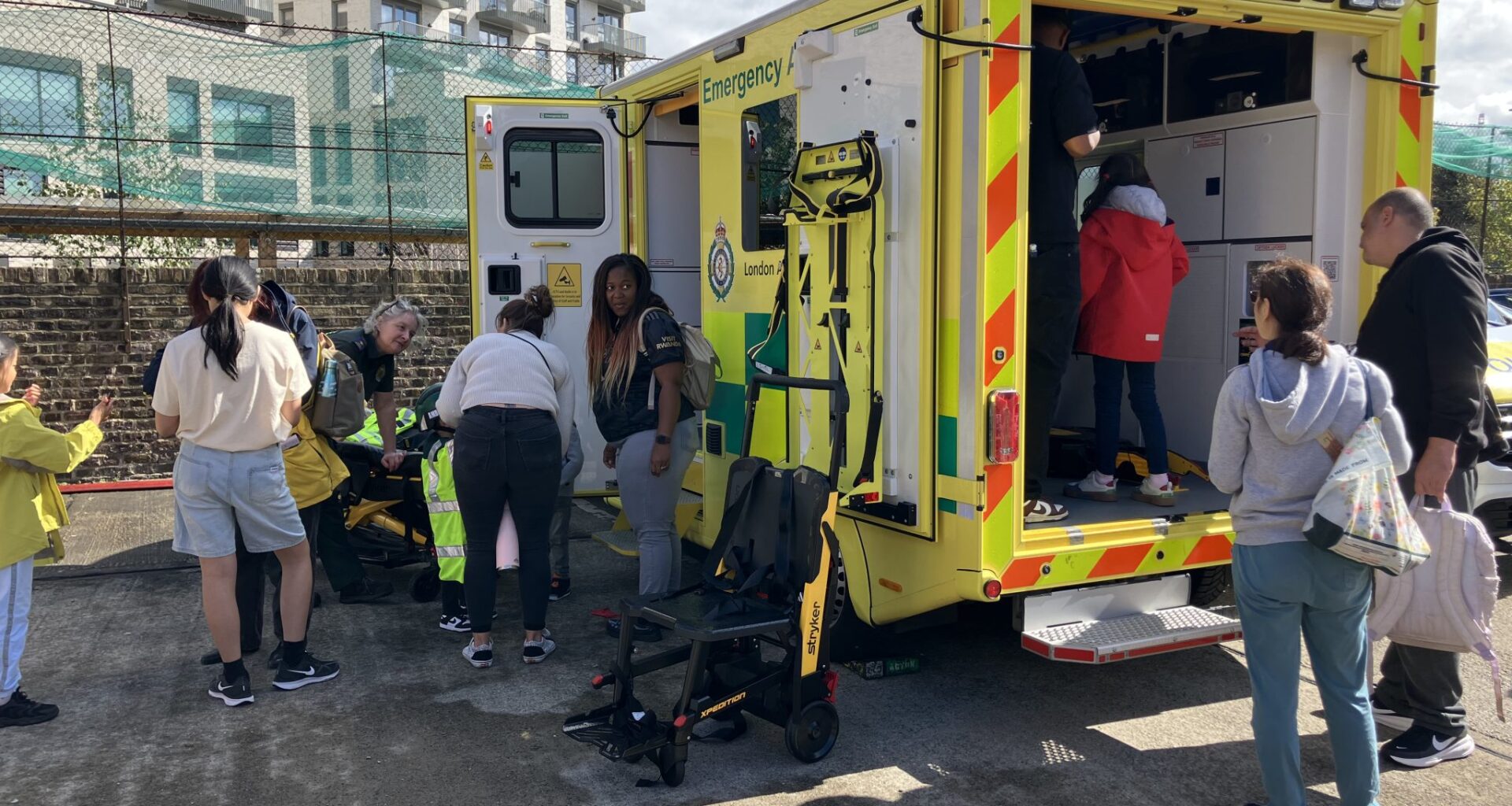Mike Lewis is the Head of Emergency Management at Ealing Council in West London. He and his team ran an emergency response day to bring the local community together to think about what ‘whole of society resilience’ looks like. Using Acton Fire Station as a platform to gather partners from the borough resilience forum (the London equivalent of the Local Resilience Forum), Mike spoke to me about what it takes to create a day like this and the benefits it brings.
He’s lucky that this takes place on a sunny Saturday afternoon in September. The weather has brought out the crowds and when I’m there, the place is buzzing with families enjoying access to the fire engine and trying out the fire hose as well as the chance to learn CPR on a dummy lying on the appliance bay floor.
“We identified that communities need to be at the centre of our plans and we had previous funding that allowed us to deliver four training sessions with local community groups,. We covered risk and preparedness, emergency response capabilities, and recovery events, as well as how communities shape recovery. After that we did a tabletop exercise, and brought those elements together to walk through what that looks like from the community’s point of view, the impacts and where can they get involved.”
As a result of this and other work with faith groups, this BRF came together to create the event at Acton Fire Station – what Mike calls a ‘community resilience roadshow.’ It is a demonstration of how partners respond to raise awareness of kind of local risks, but also how they can prepare for emergencies, he explains. All of this is helping his team to develop the community resilience strategy and the way in which the BRF will maintain momentum, keeping the community partners together for the long haul.
Awareness days like this one in Acton are great but what the local authority wants to know is how the local community will respond when there is an incident. We talk about the Civil Contingencies Act 2004 obligations and the recent consultation on the role of the VCS sector as responders. Mike says that in Ealing, like all other boroughs, there has been a lot of discussion about the consultation as well as work on asset mapping and working out what local groups could and would come forward in an emergency to support the statutory agencies.
“We’ve probably got about a dozen of those,” he explains. “So they will be the core membership and part of the resilience forum, as well as the faith leaders.” He then maps out the practicalities of involving the voluntary and community sector (VCS). “How do we give them their own training and exercise programme? It’s still shaping up for us.” He cites the example of local voluntary and community groups that engaged with asset mapping their resources, which includes around 500 volunteers from those organisations and many hyper local in their focus. There is a challenge to find those who can contribute to the planning and thinking at a wider level, he adds.
We move on to talk about communicating during an emergency. Thinking back to the experience of the tragic Grenfell Tower fire where local people brought in spontaneous donations to help those left homeless but the coordination was challenging. Mike says that there will always be spontaneous volunteers and spontaneous donations, it is just human nature to want to help.
“Yes, you’re right to mention previous incidents and the inquiries that have looked at the response of volunteers. Spontaneous volunteers can offer so much, so much support. But actually, if you don’t have the mechanisms in place to carefully manage what they can do and how they can provide their support, they feel a bit wasted. We don’t ever want to get to a position where people are coming forward to support with something and don’t have a meaningful role and can’t engage.”
The publication of the government’s Resilience Action Plan back in July saw the former Resilience Minister, Pat McFadden cautioning the country to take resilience seriously. It includes an objective to better integrate the offer from voluntary, community and faith groups. I ask Mike what discussions they have been having about it in their BRF.
“I think there is definitely a lot in there for us to talk about. As a council we have to look at our funding and capacity to do things when service demand is constantly going up. We need to find better ways of working, and a lot of that is by through multi agency working, but I think the next stage is absolutely with community groups. The council is embracing a connected communities ethos. I think if we can collectively work well together, then it puts us in a much better position to respond and recover from emergencies when they do occur.”
Our conversation takes place in the fire station appliance bay surrounded by the local community enjoying an afternoon of learning. I spot the local MP and the Mayor of Ealing both of whom are there to talk to local people and find out what resilience means to them. Mike and his team will reflect on the day, reconnect with community groups and continue the path forward to see how the idea of ‘whole of society’ resilience translates on the ground.
Building relationships now is key because no one wants the day of an emergency to be the first time they meet those vital community groups.
Read more on community perceptions of resilience – Majority of Brits feel unprepared for future crises.
